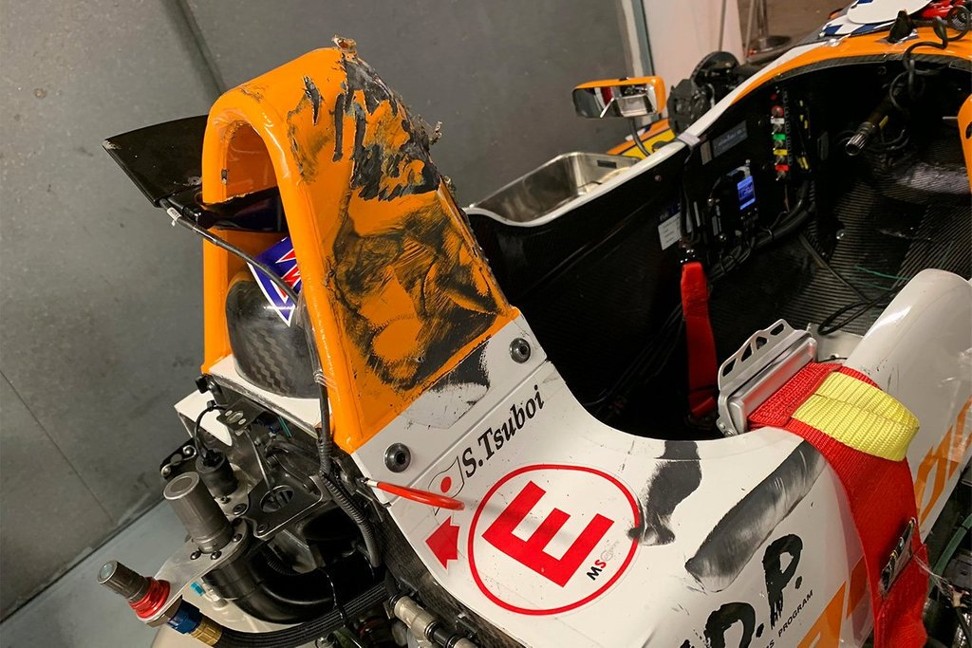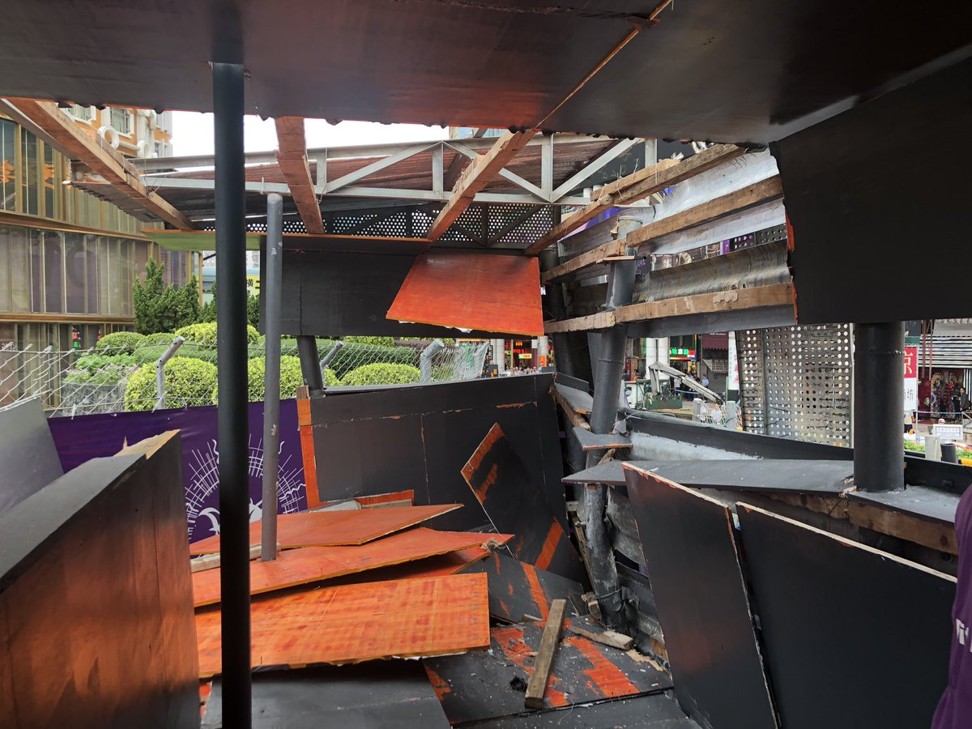
Sophia Floersch: how safety measures – and dumb luck – helped teenage driver survive Macau Grand Prix horror crash
- FIA and race organisers’ new safety measures at track were crucial
- But 275kph crash could have been deadly if not for series of lucky escapes
Television cameras did not fully capture Sophia Floersch’s horror crash at the Macau Grand Prix, but it was obvious something serious had happened when half of the press ran over to the other side of the media room to crowd around a journalist’s computer and audibly gasped in unison.
Broadcast footage showed only the German’s wrecked car tangled up in the barriers at Lisboa corner, but astonishing videos from fans trackside soon emerged on social media.
The German reporter sat next to me immediately called his editor, as it dawned that this could be another death at the notorious Guia Circuit, which claimed the life of British motorbike racer Daniel Hegarty last year.
“We got some information from social media while we were waiting at the door of race control, but when you look at those images it is heartbreaking so we were thinking of the worst,” Frits van Amersfoort, the Dutch owner of Floersch’s Van Amersfoort Racing team, told the BBC.
With the race red flagged, the drivers came back into the pit lane and casually chatted with the television interviewer, as ambulance sirens could be heard in the background.
“They are so safe nowadays, you can be pretty damn sure you’re gonna walk away [from a crash],” Motopark driver Ferdinand Habsburg had said.
“We’ve just had a pretty big crash with Sophia. I hope she’s really doing well but I’ve heard that she’s fine, which is great.”
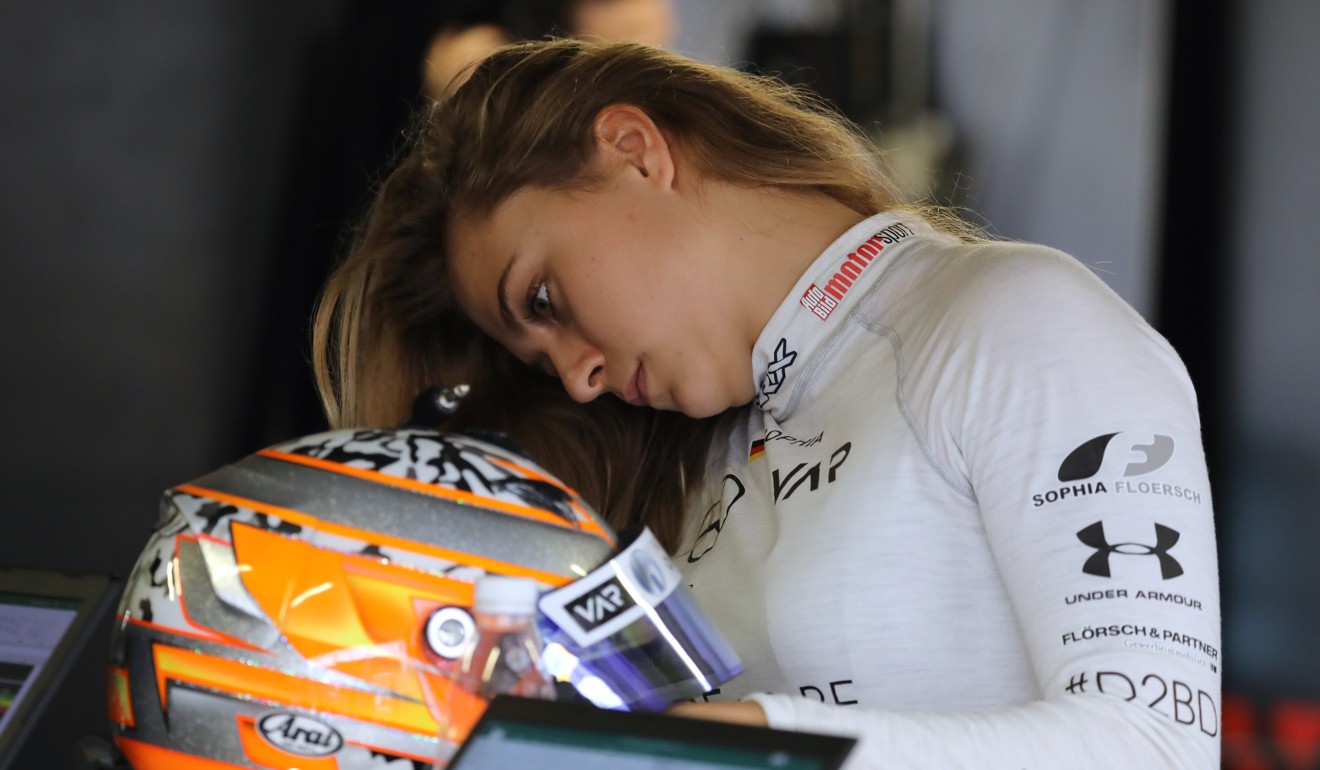
It seemed inconceivable as the race got back under way after around an hour, but word eventually came from the FIA and the Macau Grand Prix Organising Committee that Floersch and four others were all conscious and had been taken to the emergency room.
A collective sigh of relief was breathed, before the inquest began: how had such a serious crash happened, and how did no one die?
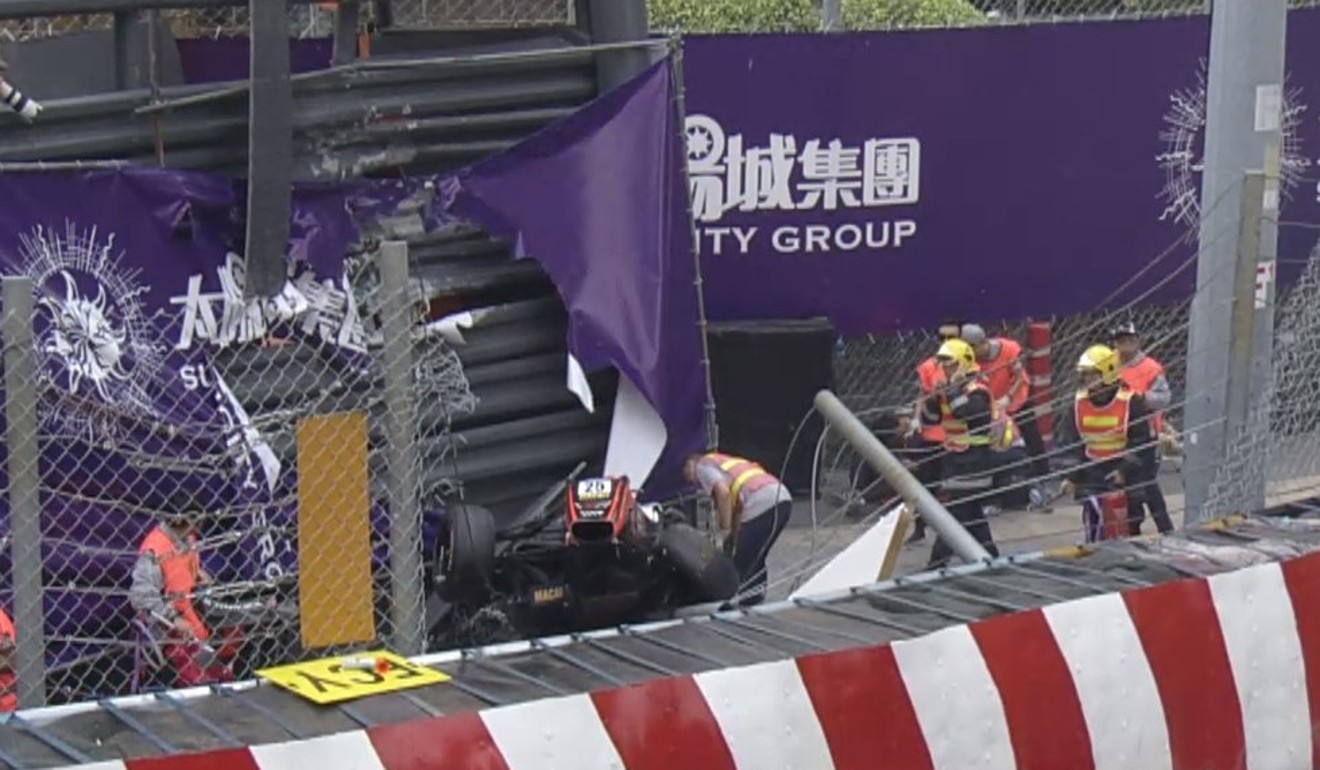
The 17-year-old fractured her spine in Sunday’s race when her car flew into the air and over the crash barriers, tearing through the safety fencing and hitting a photographer’s tribune at high speed.
“It was nearly a rocket. Surviving was incredible. We reckon she was travelling at 276 kilometres per hour at the time,” van Amersfoort, told the BBC.
On the flat-out run down to Lisboa on lap four, Floersch had lost control of her wheels after hitting the back of Jehan Daruvala’s car – the Indian Carlin F3 driver was apparently slowing for yellow warning flags.
“Sophia was really close to Jehan, so when Jehan braked early she had no time to react,” Chinese driver Zhou Guanyu, who was behind both cars, said.
“She hit Jehan’s right-rear, and that spun her around straight into Lisboa, and she flew into the other car.”
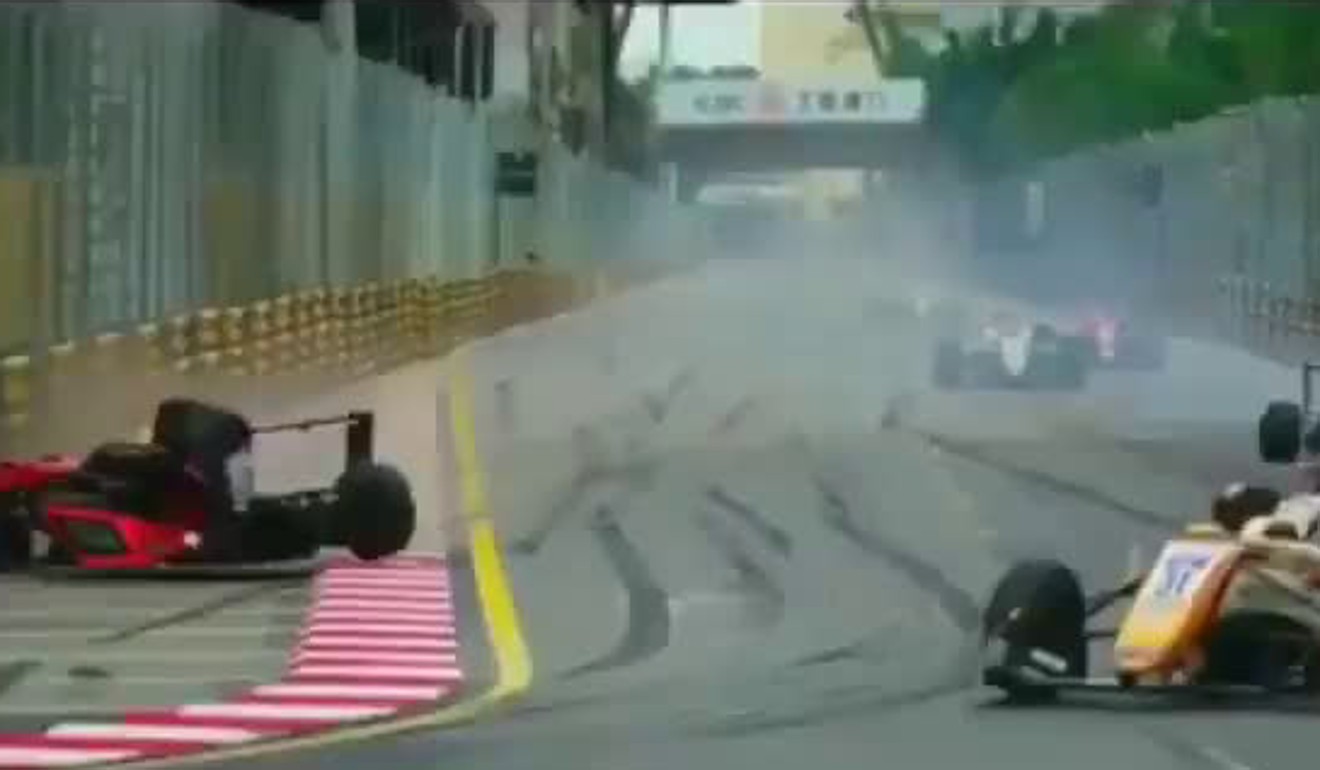
The left-side wheels of Floersch’s Dallara-Mercedes came off when she hit the barrier at the tight right-hander, meaning she could not brake.
She was launched backwards over the raised inside kerb into the chassis of Japanese driver Sho Tsuboi’s car, catapulting Floersch’s car into a temporary stand populated by photographers.
Some quickly put the blame for the crash on those blue inside kerbs which were added to the track this year by the FIA.
“How many times do crashes like these need to happen for you to understand that high kerbs is a dumb idea?” wrote one user on Twitter.
“Rushes Halo to sound politically correct but completely ignores problems that actually exist. @fia you piece of garbage! Almost killed Sophia Floersch and other people.”
But it was probably those raised kerbs, which are often used in Formula One, that saved Floersch’s life.
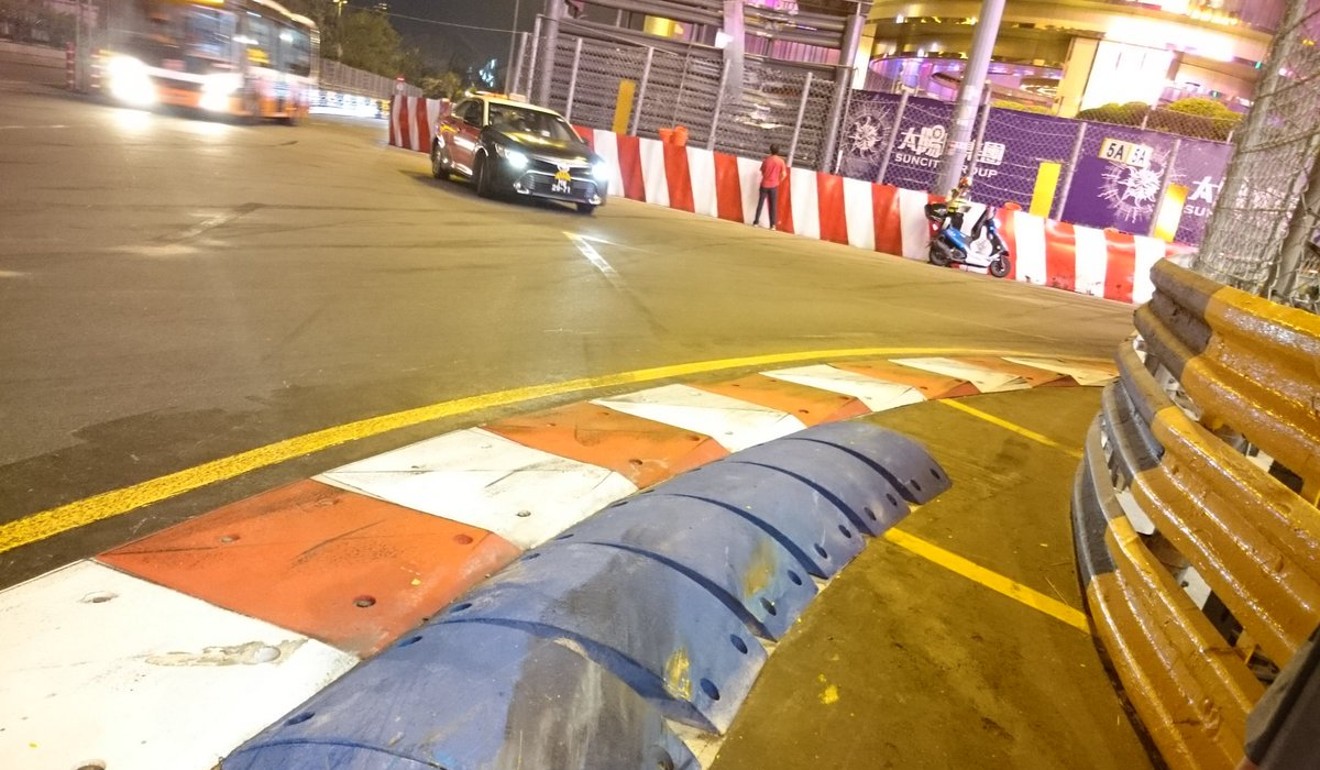
“We were lucky that she was flying because she went over a barrier. If she had hit the barrier it would have gone a lot worse,” Van Amersfoort said.
The raised kerb also meant that instead of hitting Sho Tsuboi’s TOM’s car side-on at the cockpit, Floersch was lifted into the air, striking only Tsuboi’s roll hoop – and leaving some hefty tyre marks.
Although the fences are there to catch debris and not a whole vehicle, had they not been so high then Floersch’s car would have hit the photographers’ tribune with a lot more energy, too.
Instead, the severity of the impact was reduced with a lot of the energy absorbed – the fenceposts were bent backwards out of shape.
And as Floersch wrote in a Facebook post after undergoing 11 hours of surgery at Conde S. Januario Hospital on Monday, “Dallara built a very good chassis”.
So instead of just blaming the FIA, we should give them a lot of credit for improving cockpit safety, as well as for guiding Macau organisers to raise the height of the safety fences.
The crash also would have been a lot worse if Floersch had flown straight into the solid concrete structures behind the bunker – the temporary nature of the photographer’s tribune will have absorbed more of the energy of the crash, too.
As Hong Kong-based Australian photographer Christiaan Hart revealed, everyone inside the bunker was thrown to the floor.
“It all happened so fast, the speed, sound and impact was shocking … by the time I saw the car lift, it was like a bomb going off,” Hart told the Hong Kong Free Press.
Another lucky escape for Floersch was that she struck the bunker backwards with her roll hoop and cockpit area appearing to hit an opening, where the photographers would poke their cameras out of.
She then landed back down on the barrier, which luckily again was right next to a marshal’s post, meaning she was immediately tended to.
Two photographers – one with concussion, another with a liver laceration – and one marshal were also taken to hospital, along with Tsuboi who was treated for back pain, but none had life-threatening injuries.
“As you can see from the images inside [the bunker], it’s lucky no one got killed,” Hart added.
Van Amersfoort was of the same mind, saying Floersch is “lucky to be alive” and “must have had an angel on her shoulder”.
But you make your own luck, and the FIA’s improved safety measures helped save lives on Sunday.


